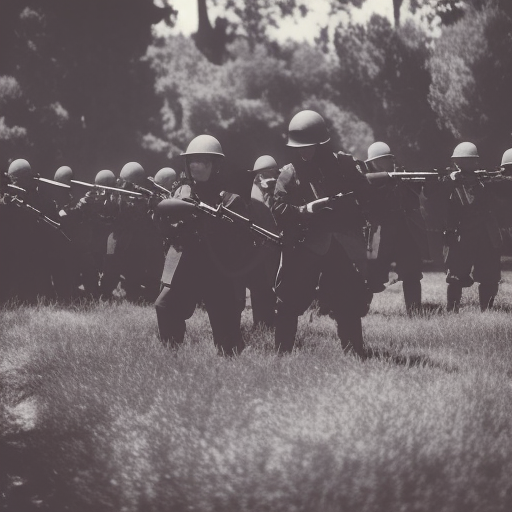Battle of Palo Alto: The First Major Battle of the Mexican-American War
The Battle of Palo Alto, fought on May 8, 1846, was the first major battle of the Mexican-American War. It took place near the town of Palo Alto, Texas, along the Rio Grande River. The conflict arose from the territorial disputes between the United States and Mexico, with the former seeking to expand its territory westward.
Background
In the early 19th century, Mexico gained independence from Spain and established itself as a sovereign nation. However, the Mexican government faced numerous challenges, including political instability and economic difficulties. As a result, Mexico was unable to effectively govern its northern territories, which included present-day Texas.
The Mexican government encouraged American settlers to migrate to Texas, hoping they would help develop the region. However, tensions arose between the Mexican authorities and the American settlers, primarily due to cultural and political differences. The Americans sought greater autonomy and eventually rebelled against Mexican rule, leading to the Texas Revolution in 1835-1836.
Texas declared independence from Mexico and formed the Republic of Texas. The Mexican government, however, refused to recognize Texas as an independent nation and considered it a rebellious province. This led to a border dispute between Mexico and the United States, with the latter claiming the Rio Grande River as the boundary, while Mexico insisted it was the Nueces River further north.
The Battle
In 1846, President James K. Polk ordered American troops under the command of General Zachary Taylor to move into the disputed territory between the Rio Grande and Nueces Rivers. Taylor’s forces established a camp near Palo Alto, not far from the Rio Grande.
On May 8, a Mexican army under the command of General Mariano Arista engaged Taylor’s forces in the Battle of Palo Alto. The Mexican army outnumbered the Americans, with around 3,400 troops compared to Taylor’s 2,300. However, the American forces had superior artillery and were better trained.
The battle began with artillery exchanges between the two sides. The Mexican artillery initially had the advantage, but the American artillery soon found its range and began inflicting heavy casualties on the Mexican troops. The American infantry then advanced, supported by their artillery, and engaged the Mexican forces in close combat.
Despite their numerical superiority, the Mexican troops struggled to break the American lines. The American artillery proved devastating, causing significant casualties among the Mexican ranks. The battle lasted for several hours, with both sides sustaining heavy losses.
Outcome and Significance
The Battle of Palo Alto ended with a tactical victory for the United States. The Mexican forces were forced to retreat, and the American troops held the field. The battle demonstrated the effectiveness of American artillery and the superior training of their soldiers.
The Battle of Palo Alto was significant for several reasons. It marked the first major engagement of the Mexican-American War and set the stage for further conflict. The American victory at Palo Alto boosted morale and confidence within the U.S. military.
Furthermore, the battle highlighted the technological superiority of the American forces. The effective use of artillery played a crucial role in the American victory and would continue to be a significant factor in subsequent battles of the war.
The Battle of Palo Alto also had political implications. It further strained relations between the United States and Mexico, leading to an escalation of hostilities. The conflict would ultimately result in the United States acquiring vast territories from Mexico, including present-day California, Nevada, Utah, Arizona, New Mexico, and parts of Colorado and Wyoming.
In conclusion, the Battle of Palo Alto was the first major battle of the Mexican-American War. Fought near Palo Alto, Texas, it demonstrated the effectiveness of American artillery and marked the beginning of a conflict that would reshape the territorial boundaries of both nations.












